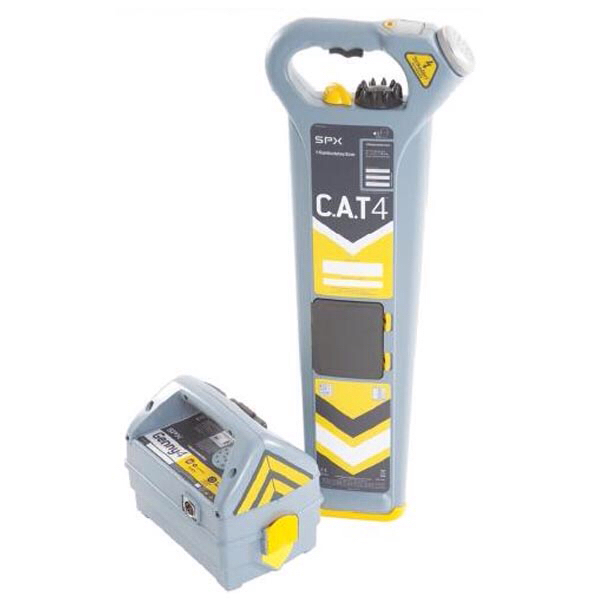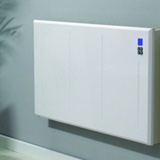Title Page
-
Site conducted
-
Conducted on
-
Prepared by
-
Location
-
Job Number
Disciplines covered by this inspection & servicing report
-
Fire Detection & Alarm Systems (BS5839)
-
Emergency Lighting Systems (BS5266)
-
Smoke Ventilation & Control Systems (BS7346-8)
-
Disabled Refuge EVCS (BS5839-9)
-
DDA Alarms & Nurse Call
-
Operation of Fire Protection Measures (BS7273)
-
EVAC Alert Systems (BS8629)
-
Intruder & Hold Up Alarms (BS9263)
-
Video Surveillance Systems CCTV (BS8418)
Fire Detection & Alarm Systems (BS5839-1)
-
Category of Installed System
-
Control Panel
-
Manufacturer Make & Model
-
Is the control panel in good condition
-
Batteries
-
Battery Ampere Hour test
-
Automatic Fire Detectors Tested
-
Did any Automatic Fire Detectors Fail a Functional Test
-
Detector Spacings Correct - SD (7.5m) HD (5.3m) & 500mm clearance below all detectors
-
Manual Call Points Tested
-
Are all manual call points unobstructed and conspicuous
-
Did any manual call points fail to operate correctly
-
Alarm Sounders & Visual Alarm Devices Tested
-
Did any Sounders or Visual Alarm Device Fail to Operate
-
Are all Alarm Sounders the same sound & VADs the same colour throughout the building
-
Ancillary Functions Tested (I/O & Relays)
-
BS7273 Operation of Fire Protection Measures to be completed
-
Did any ancillary functions fail to operate
-
Standby Power Supply Check
-
Standby Load (Milliamps)
-
Alarm Load (Milliamps)
-
Size of Batteries Installed (AH)
-
The sizes of batteries installed should be able to support the system as described below:
-
Category M&L= Standby Supply of 24hrs & 0.5hrs Alarm Duration
-
Category P = Standby Supply of 72hrs & 0.5hrs Alarm Duration
-
Are the batteries suitably sized for the required standby times as described above
Inspection Checklist
-
Is the system still appropriate for the site / building layout
-
Equipment List Correct
-
Mains Supply Isolators & Equipment in good condition & compliant
-
Sufficient Number of Manual Call Points (Sec 45)
-
Manual Call Points Fitted with Covers
-
AFDs & Alarm Sounders in good condition
-
Head Removal Monitoring
-
Cause & Effect Confirmed
-
Labels Installed to Batteries & Firehawk Contact Label Installed to Control Panel
-
Staff have knowledge on how to operate the system
-
Where visible installation to appropriate standard
-
Suitable Zone Plan Fitted
-
Customer Contact Details upto Date
-
Please supply updated contact details
-
Monitoring contact info is current
-
Please supply updated contact details
Emergency Lighting Systems (BS5266)
Purpose of Emergency Lighting System
-
Emergency Escape Lighting
-
Escape Route Lighting
-
Open Area Lighting
-
Standby Lighting
-
Partial Standby Lighting
-
High Risk Task Area Lighting
Emergency Lighting Installation Arrangement
-
Self Contained Emergency Luminaire
-
Combined Emergency Luminaire
-
Central Battery System
-
Central Generator / UPS
Categories for Operation
-
Maintained
-
Non Maintained
-
Keyswitches
-
Isolation of Protective Devices
Emergency Lighting Test Completed this Visit
-
1hr Functional Test
-
3hr Full Duration Test
Results of Inspection & Testing
-
Plans are available and correct
-
Under test conditions adequate illumination provided for safe movement on the escape route and open areas
-
Original Design Still Valid for Building Layout & Occupancy
-
All escape route safety signs, fire fighting equipment location signs visible with normal lighting extinguished
-
Correct Application & Siting of Emergency Lighting
-
Luminaires conform to BS EN 60598-2-2
-
Luminaires have appropriate ingress protection rating for their location as specified in the system design
-
Wiring Systems comply with requirements of BS7671
-
Fire Protection of Central Wiring Systems Satisfactory
-
Emergency Circuits correctly segregated from other supplies
-
Wiring to emergency lighting power supply sources a fixed installation, where a specialist plug and socket arrangement is used it is protected from unauthorised interference
-
Central Power System output voltage is compatible with supply voltage range of the luminaires, taking into account supply cable voltage drop
-
luminaires tested and found to operate for there full rated duration
-
Building occupier and their staff trained on suitable maintenance, testing and operating procedures or a current maintenance contract is in place
-
Evidence of Servicing Central Battery System (in line with manufacturers procedures) in house or current maintenance contract in place
-
Evidence of Servicing Standby Generator System (in line with manufacturers procedures) in house or current maintenance contract in place
-
After test the charging indicators operate correctly
-
Engineer Comments
Smoke Ventilation & Control Systems (BS7346-8 2013)
Purpose of Smoke Ventilation System
-
Category 1 - (PH30/F30 minuite survival time) - Means of Escape System
-
Category 2 - (PH60/F60 minuite survival time) - Means of Escape System
-
Category 3 - (PH120 + Annex B/F120 minute survival time) - Fire Fighting Systems
-
Category Not Specified - (Tested in accordance with BS7346-8 2013)
Results of Inspection & Testing
-
Control Panels
-
System make & model
-
Are control panels compliant and in good condition
-
Ventilation System Type
-
System Actuation
-
Smoke Control Dampers
-
Do Smoke Control Dampers Function Correctly
-
Smoke Control Louvres
-
Do Smoke Control Louvres Function Correctly
-
Smoke Control Actuators
-
Do Smoke Control Louvres Function Correctly
-
Smoke Control Curtains
-
Do Smoke Control Curtains Function Correctly
-
Standby Power Supply Check
-
Do the installed batteries have sufficient Capacity (AmpereHours)
-
Standby Current
-
Alarm Load Current
-
Are the batteries suitably sized for 72hr standby duration & 180 Second Actuation
-
Do all manual call points function correctly
-
Do all Fire & Rescue Service Control Panels function correctly
-
Mechanical Extract Flow Readings
-
Flow Readings
Inspection Checklist
-
The agreed “cause and effect” requirements function correctly and the <br>system responds to any planned method of initiation
-
When the primary power is removed, the secondary power supply operates<br>within the interruption time specified in BS EN 12101-10;
-
When the duty equipment fails, standby equipment operates, e.g. duty<br>standby fan sets and UPS equipment;
-
labels, visible when secondary power supplies (e.g. batteries) are in their<br>normal position, are fixed to batteries, indicating the date of installation or<br>date of last replacement and that those dates are within the manufacturer’s<br>recommended life cycle
-
All fault monitoring functions operate correctly, e.g. by simulation of fault<br>conditions.
-
System Returned to Normal Operation
-
Engineer Comments
Disabled Refuge - EVCS (BS5839-9)
Results of Inspection & Testing
-
Control Panels
-
Manufacturer & Model
-
Control Panel Compliant & In good condition
-
Outstation Call Panels
-
Do all call panels function correctly to the EVC Panel and Speech is Clear
-
System cabling of fire rated type
-
Standby Power Supply Check
-
Do the installed batteries have sufficient capacity (AmpereHour)
-
Standby Load Current
-
Alarm Load Current
-
Are the batteries suitably sized for 24hr Standby Duration
-
System Returned to Normal Operation
-
Engineer Comments
DDA & Nurse Call Alarms
Results of Inspection & Testing
-
Control Panels
-
Manufacturer & Model
-
Control Panel Compliant & In good condition
-
Call Points
-
Did all call points tested function correctly
-
Standby Power Supply Check
-
Do the installed batteries have sufficient capacity (AmpereHour)
-
Standby Load Current
-
Alarm Load Current
-
Are the batteries suitably sized for 24hr Standby Duration
-
System returned to normal operation
-
Engineer Comments
Operation of Fire Protection Measures (BS7273)
BS7273-6:2019 Interface with ancillary systems & equipment results of Inspection & Testing
-
Full functional test of the ancillary equipment in accordance with BS7273-6:2019 of the items indicated below
-
Smoke Control Systems
-
Lifts and other lifting equipment
-
Gas Valves
-
Fire-Resisting Shutters and Active Fire Curtain barriers assemblies
-
Electricity Supplies
-
Ventilation Systems
-
Lighting, Intelligent Signage & Wayfinding
-
Paging Systems
-
Remote Alarm Transmission Equipment
-
Fixed Fire Suppression / Sprinklers
-
Link to other FDFA - CIE
-
Brief Description of Devices Tested, Cause & Effect
-
Did ancillary devices function as intended
-
Variations from the recommendations of BS7273-6 2019 Clause 20- Periodic or Annual Inspection and Test
-
Brief Description of Variations
BS7273-4:2015 Actuation Release of Door Mechanisms results of Inspection & Testing
-
System Category of Activation
-
Category A
-
Category B
-
Category C
-
All release mechanisms have been inspected and are free from damage and securely attached
-
All manual controls for release mechanisms remain unobstructed and conspicuous
-
Have any new electronically secure doors been created without a manual release control
-
Any Changes to the building layout use or occupancy makes the siting of smoke detectors non compliant
-
Power Supply Batteries
-
Sounders needed for acoustically actuated devices should be checked for correct operation
-
Functional Test of Fault Indicators
-
All release mechanisms function as required for the system actuation category
EVAC Alert System (BS8269)
Results of Inspection & Testing
-
Control Panel
-
Manufacturer & Model
-
Control Panel Compliant & In good condition
-
Functional Check of Manual Controls for each Evacuation Alert Zone & an evacuation alert signal is given in the corresponding alert zone
-
All other controls and indicators checked for correct operation
-
All fault indicators and circuits should be checked for correct operation
-
Radio signal strengths in radio linked systems should be checked and there results recorded
-
Radio Test Results
-
Visual inspection of all accessible cabling and fixings
-
Standby Power Supply Check
-
Do the installed batteries have sufficient capacity (AmpereHour)
-
Standby Load Current
-
Alarm Load Current
-
Are the batteries suitably sized for 72hr Alarm Duration & 0.5hr Alarm
-
In Buildings with more than one evacuation alert zone on a story a suitable plan of evacuation alert zones should be installed on or adjacent the EACIE
-
EACIE Returned to normal operation
-
Engineer Comments
Intruder & Hold Up Alarms
Inspection & Test Results
-
Control Panels
-
Manufacturer & Model
-
Grade of System
-
Check operation of all movement sensors & door contacts
-
Do all deliberately operated devices (HUDs) function correctly
-
Do all warning devices function including loss of Hold Off Supply
-
Do tamper signals report to CIE
-
Does ATS Signal on all Paths
-
Does a loss of all ATS Paths indicate to the CIE
-
Standby Power Supply Checks
-
Do the installed batteries have sufficient capacity (AmpereHour)
-
Standby Load Current
-
Alarm Load Current
-
Are the batteries suitably sized for standby duration for the required grade
-
System Monitoring Details (Device Type / ARC / Chip)
-
Has the system been returned to normal operation
-
Engineer Comments
Video Surveillance Systems (CCTV) BS8418
Results of Inspection & Testing
-
Does the system still meet the system specification / design documentation
-
DVR / NVRs Inspected
-
Is all recording & transmission equipment in good condition
-
Cameras Inspected
-
Brief Description of System (Make Model Devices)
-
All cameras clean and free from Debris
-
All Power Supplies Functioning Correctly
-
All Intrusion Detectors are Unobstructed and Clean
-
All Hard Disk Drives Checked for Errors
-
Secondary Alarm Equipment Checked for Correct Functions to NVR/DVR
-
All Cameras/Zones have been tested to the Alarm Receiving Centre
-
Batteries Checked in all UPS
-
Audio Warning Function Checked
-
System Returned to Normal Operation
-
Engineer Comments
None Compliance / Failed Tests
-
Any none compliances or Failed Tests identified during this inspection and servicing visit should be reported to the RP (Responsible Person) for the premises inspected, It should also be reported to the firehawk compliance team for follow up by ticking the box below
-
Notify Firehawk Office of None Compliance / Failed Test












